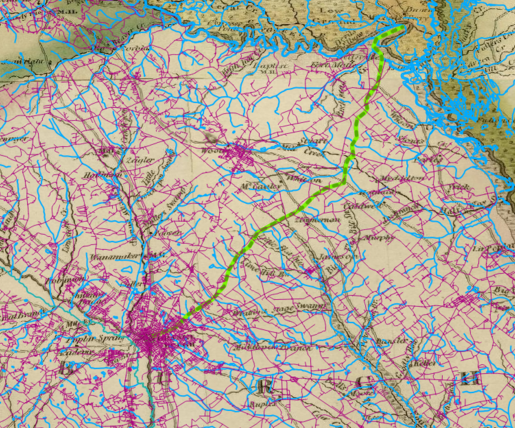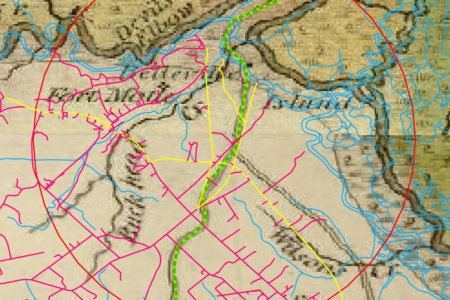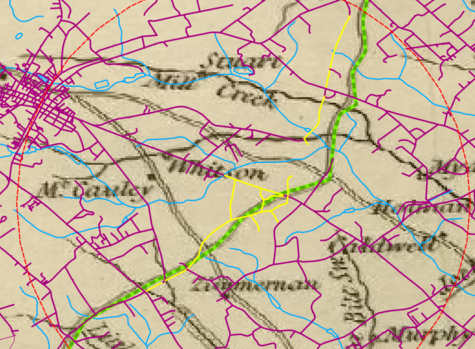

The Belville or Bellville or Belleville Road
The Belville Road, after Nelson's Ferry and the Congaree-River-Road-Monck's-Corner-Road, is probably the most traveled road in Orangeburgh District during the Revolutionary period. Providing the only connection from McCord's Ferry and the Fort Motte area to Orangeburgh. This road was used by Lord Rawdon in his march to Ninety Six and traveled by Nathaniel Greene after the fall of Motte's Fort when he "sat down" before Orangeburgh to offer battle. It was used by Thomas Sumter in his capture of Orangeburgh on May 11, 1781.
In conjunction with the Dorchester-Orangeburgh Road, this represented a way to Charles Town and (along with a branch of the Congaree River Road, now Route 6) is likely the one referred to by Light Horse Harry Lee when he mentions "...the road by the Eutaws and Motte's Post from Charleston intersected that from Charleston by the way of Orangeburgh" (LHLee.)
When the Belville Road to McCord's Ferry was first laid out is not known, and it was not until 1797 that it was made a Public Road after the Revolution.

Shown here is the Belville Road from a our Wilson/Tanner georeferenced base map from Orangeburgh past the Congaree River Road, then past Col Thomson's and then to McCord's Ferrry. Also shown are South Carolina Department of Highways roads for Orangeburg and Calhoun Counties for comparison. The Belville Road is shown as a dashed, green and yellow line.
Most of the road is still in existence with some exceptions:
- Where the road crossed Lyons-Mill Creek quite near current Route 6 (old Congaree River Road shortcut from Big Beaver Creek to Santee.).
- The exact route across a current field, although like pretty much straight, and
- how, exctly the road wandered down into the Buckhead Creek bed down to the Oxbow in the Congaree River and McCord's Ferry.
These will be shown on detailed maps of each area.

The blow-up here (left) is the section of Belville Road as it crosses the old Congaree River Road and then passes to McCord's Ferry. Three possible paths, all of which could have been in use during the Revolution are shown. The old Congaree River Road passes from left to right. The 1822 map appears to flollow a direct route to the ferry and close to where Col. Thomsons home (and British fortified point) was situated.

Three possible Lyon's Creek-Mill Creek crossings by the Belville Road are shown (right), all near one another. The direct path again seems more likely, while the other paths can be seen today as having been moved off private property or as short cuts to the Congaree River Road (alternate and shorter than the route closer to the river)